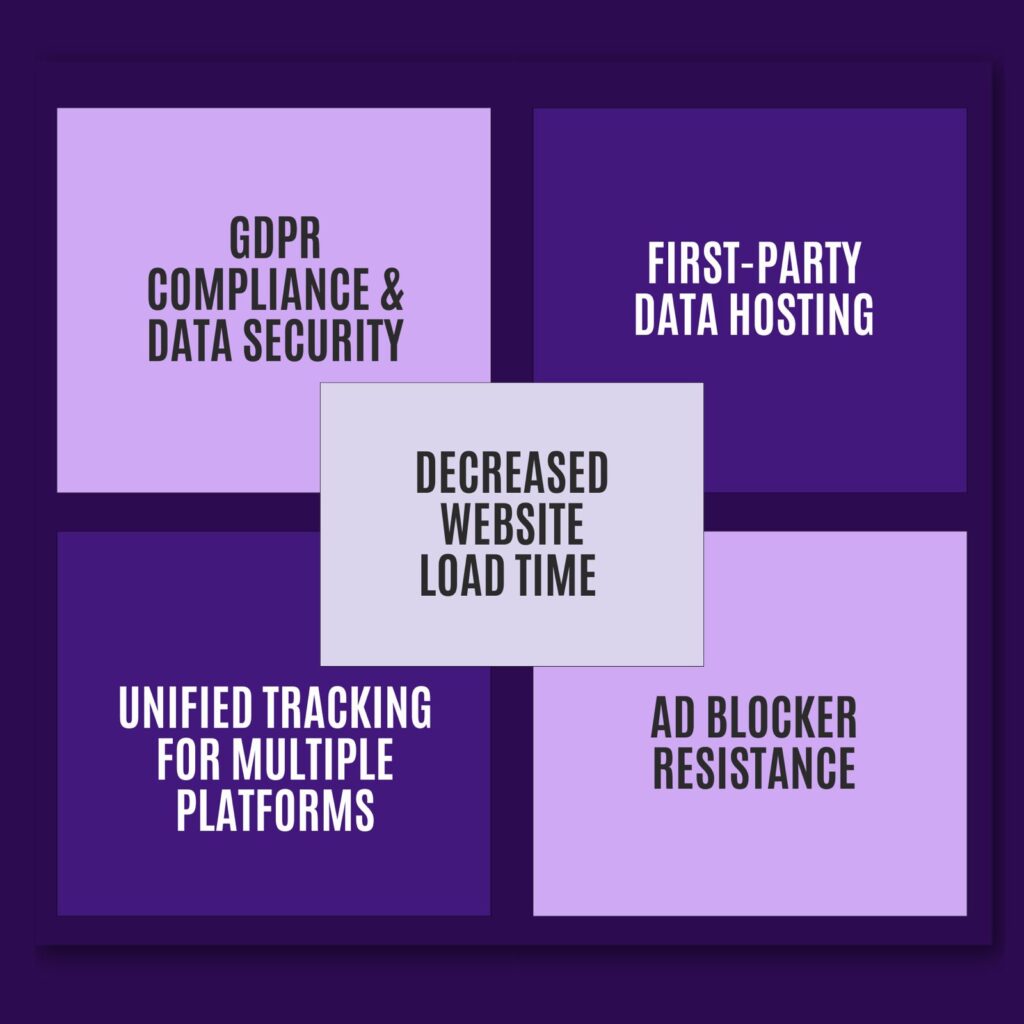Server-Side Tracking Services
Bot Traffic Filtration
Bots (both legitimate and malicious) can skew your analytics data. Implementing bot traffic filtration helps identify and exclude non-human traffic from your reports. This ensures accurate insights for decision-making.
Send Data to Multiple Tools
Businesses use various tools (such as Google Analytics, Mixpanel, or custom solutions) to analyze data. Sending relevant data—such as user interactions, events, or conversions—from your website or app to these tools is crucial for informed decision-making.
Conversion Attribution
Attribution models determine how credit is assigned to different touchpoints in a user’s journey. Whether it’s first-click, last-click, or multi-touch attribution, understanding which channels drive conversions helps optimize marketing efforts.
Identity Resolution
In a multi-device world, identifying the same user across different touchpoints (e.g., mobile, desktop, app) is challenging. Identity resolution involves linking user profiles to create a holistic view, enabling personalized experiences.
Load Balancing
For high-traffic websites or applications, distributing incoming requests across multiple servers (load balancing) ensures optimal performance. It prevents server overload and maintains responsiveness.
Page Load Time Reduction
Slow-loading pages frustrate users and impact SEO. Techniques like image optimization, caching, and minimizing HTTP requests help reduce page load time, enhancing user experience.
Why Your Business Needs Server Side Tracking

Related Blogs

Master Google Privacy Sandbox: Thrive in a Cookie-Free World
Explore Google Privacy Sandbox: The future of privacy-first ad targeting. Learn how to adapt to

Unlock More ROI with Server-Side Tracking in E-Commerce
Unlock more ROI with Server-Side Tracking in E-Commerce. Improve data accuracy, boost conversions, and enhance

How Server-Side Tagging Improve Website Efficiency And Security
Discover how server-side tagging improve website speed, enhance user experience, and boost conversion rates by

How to do Historical Data Migration from Google Analytics 3
Ensure smooth data migration from Google Analytics 3 before its deprecation. Learn key methods like
Frequently Asked Questions
SST is a method of data collection where user interactions and events are processed on the server instead of the user’s browser.
SST involves moving data collected from a browser to an analytics platform using server-side methods. Unlike client-side tracking, which relies on browser-based scripts, SST processes data on the server.
Client-side tracking occurs in the user’s browser, while server-side tracking processes data on the server. SST is becoming popular due to ad blockers and browser restrictions affecting client-side tracking.
SST helps gather accurate data on user behavior, connect customer journeys, and improve data quality. It’s essential for companies seeking reliable data in an increasingly challenging tracking landscape.
Improved data accuracy, especially in the face of ad blockers and browser limitations. Better control over data sharing with marketing tools. Potential positive impact on page speed and SEO.

